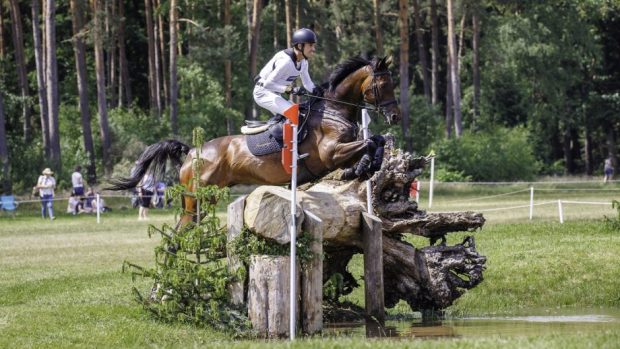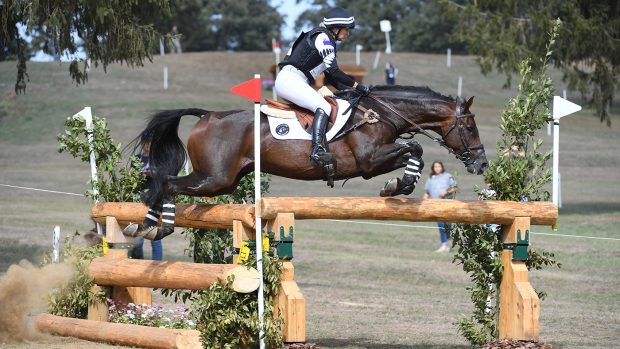The World Eventing Championships format for the event in Pratoni del Vivaro, Italy (15-18 September) will be familiar to eventing fans, as the competition is following the traditional team three-day event format, unlike last year’s Tokyo Olympics, which had quite a few differences in format to usual.
For those less familiar with the sport, or who need a reminder, let’s recap on the World Eventing Championships format.
Teams and individuals
- A maximum of five horse and rider combinations can take part from each nation.
- A team consists of three or four combinations, with the best three scores to count.
- Nations not represented by a team can field one or two individual combinations.
The phases
- The competition officially starts with the horse inspection on Wednesday 14 September, when the ground jury and veterinary delegate look at each horse and assess its fitness to take part.
- On Thursday 15 and Friday 16 September, each combination will take to the arena in turn and perform CCI5*dressage test (B), which includes movements such as shoulder-in and half pass in trot and canter, rein-back and flying changes.
- On Saturday 17 September, every horse and rider tackle the cross-country course, designed by Giuseppe della Chiesa. There will be 38 to 42 jumping efforts, with a maximum fence height of 1.20m (1.40m with brush) and a maximum top spread of 1.80m. The course will be between 5600m and 5800m and should be ridden at 570m per minute, so the optimum time will be between 9min 50sec and 10min 10sec.
- The final day, Saturday 18 September, starts with another horse inspection. This is followed by the showjumping, in reverse order, over a course of 11 to 13 numbered obstacles (16 jumping efforts), designed by Uliano Vezzani. The course is of five-star standard, with a maximum fence height of 1.30m, and the optimum time will be set for combinations to tackle the track at 375m per minute.
World Eventing Championships format: scoring
- Eventing penalties work on a “lowest is best” system, so the combination with the lowest score at the end of the event win the competition individually.
- Each pair receive a mark for their dressage test, following the principles of eventing dressage scoring, and the aim after that is not to add any more penalties.
- A team consists of three or four combinations, with the best three scores to count and the team with the lowest total score taking the gold medal. Teams cannot mix and match between combinations for scores from each phase – the final team score consists of the nation’s best three total scores across all phases (so if a horse does a brilliant dressage test, but is eliminated cross-country, the team cannot count its dressage score but discard its cross-country score).
You might also be interested in:

Horse & Hound’s essential guide to eventing dressage scoring

Horse & Hound’s essential guide to eventing penalties

Pippa Roome: ‘It’s time to get on board with the World Championships – it’s not WEG’

Eventing World Championships tickets 2022: your full guide to attending in person

Subscribe to Horse & Hound magazine today – and enjoy unlimited website access all year round
Horse & Hound magazine, out every Thursday, is packed with all the latest news and reports, as well as interviews, specials, nostalgia, vet and training advice. Find how you can enjoy the magazine delivered to your door every week, plus options to upgrade your subscription to access our online service that brings you breaking news and reports as well as other benefits.




